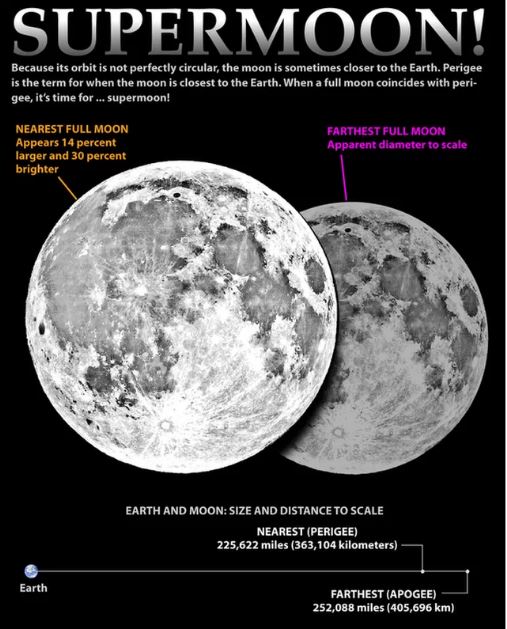
ST. GEORGE — The moon is about to put on its best show of the year on the celestial stage. When the “Full Cold Moon” rises Sunday evening, it will be the first – and last – “supermoon” of 2017.

A supermoon occurs when a full moon is at the closest point of its orbit to the Earth, called the perigee, according to the Space.com website, which states:
This makes the moon look extra-close and extra bright – up to 14 percent bigger and 30 percent brighter than a full moon at its furthest point from Earth, called the apogee.
Because the moon’s orbit around Earth is somewhat elongated, the moon changes its distance to Earth by a few thousand miles over time, reaching a closest point – perigee – and a farthest point – apogee – in any given month.
The best time to enjoy a view of the supermoon will be as the full moon rises Sunday, just minutes after sunset at approximately 5:17 p.m., according to Space.com, when an optical effect called the “moon illusion” will make the supermoon appear much bigger and brighter than it will once it’s high in the sky.
“Any time you catch a full Moon as it rises or sets, while it’s suspended low on the horizon beaming through the silhouettes of trees or buildings, its apparent size might make you do a double-take,” NASA states on its website.
If you can’t make it outside or your night skies end up cloudy, you can watch a livestream of the supermoon from the Virtual Telescope Project.
Sunday night’s supermoon will kick off a very special “supermoon trilogy” as it is the first of three consecutive supermoons, including a lunar eclipse, NASA said in a Friday statement. The other supermoons will happen on Jan. 1 and Jan. 31, 2018.

The Jan. 31, 2018, supermoon will be “extra-special,” according to NASA, as it will take place during a total lunar eclipse visible from western North America, the Pacific and Eastern Asia. It will also be a blue moon.
“Some people call the second full Moon in a month a Blue Moon, that makes it a super ‘Blue Moon,’” NASA’s release states. “Blue Moons happen every two and a half years, on average. With the total eclipse, it’ll be a royal spectacle indeed: a ‘super blue blood’ Moon.”
If you capture a great shot of the supermoon that you would like to share with St. George News for a possible photo gallery, send images and comments to: [email protected].
Email: [email protected]
Twitter: @STGnews
Copyright St. George News, SaintGeorgeUtah.com LLC, 2017, all rights reserved.